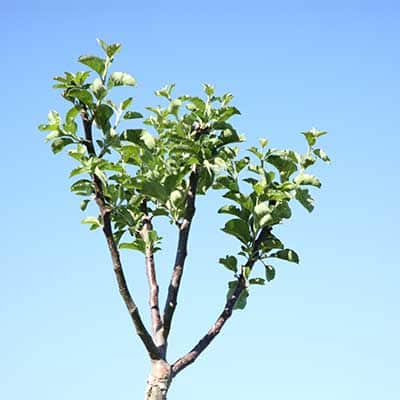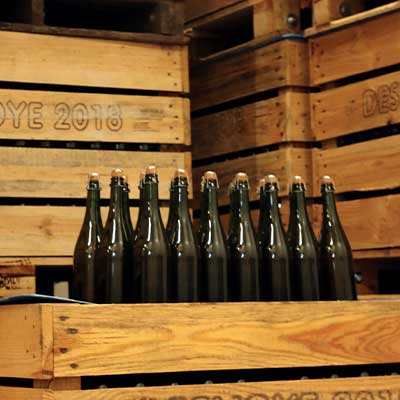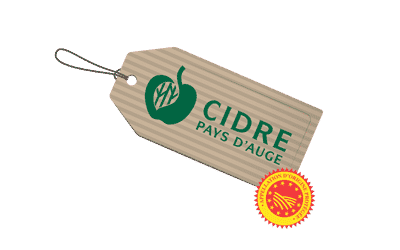Cider-making secrets
Elaboration of Pays d’Auge ciders
Pays d’Auge ciders are produced by 21 harvesting producers, according to the requirements of the appellation’s specifications.
Plots and varieties
Specific to the Pays d’Auge

Pays d’Auge ciders are made from apples from orchards located in the geographical area. These plots have soils and a varietal composition which correspond to the requirements of the appellation.
The orchards are always diversified, planted with specific varieties of the territory. There are a total of 48 varieties that can be used in the appellation.The sweet varieties bring roundness and aromatic richness. This is for example the Cockroach or the Germaine.
The phenolic varieties, rich in tannins, will bring structure, color and protection to the cider. These are, for example, Bedan, Bisquet, Domaines, Groin d’âne.
The sweet varieties bring roundness and aromatic richness. This is for example the Cockroach or the Germaine.
Finally, the acidulous varieties provide protection to Pays d’Auge ciders and taste balance. We find in this category the variety Rambault for example.

A skillful blend for each vintage
Several varieties are used to blend Pays d’Auge ciders. The phenolic varieties, dominated by the bittersweet category, are more than 70% in the blend while the acidulous varieties must represent less than 15%.
Producers work by crop year. Pays d’Auge ciders are exclusively vintages. It is not possible to combine several years of harvest.
Slowly but surely…
After harvest, the apples are crushed and the pulp, also known as marc, undergoes a maturation phase, called vatting. This step, which is compulsory in the appellation, allows you to obtain ciders with beautiful yellow to orange dresses. The grounds are then pressed. The must obtained is finally placed in stainless steel or dietary fiber tanks for the fermentation phase. Much of the quality of the future cider is already obtained. During the fermentation process, the producer is very vigilant about the fermentation speed so that it takes place slowly but surely.
0 added sugar
0 gas added
100% the expression
of its terroir and its vintage
While the fermentation is not finished, the juice is checked and tasted by the producers before being bottled. In the secret of the bottle and for at least 6 weeks, the naturally present sugars will, thanks to the naturally present or added yeasts, form fine bubbles.
Pays d’Auge ciders can then be analyzed and put on the market.

Protected and controlled designation of origin

All of the points in the specifications for the Cider Country of Origin designation of origin are checked by the Certipaq certification body, under the supervision of the INAO. Producers also carry out inspections themselves and additionally receive inspections from their union.
Each batch of Pays d’Auge cider receives 46 control points.
Not all ciders produced in the Pays d’Auge have the designation of origin. To be sure, look for the red and yellow logo of the appellation

